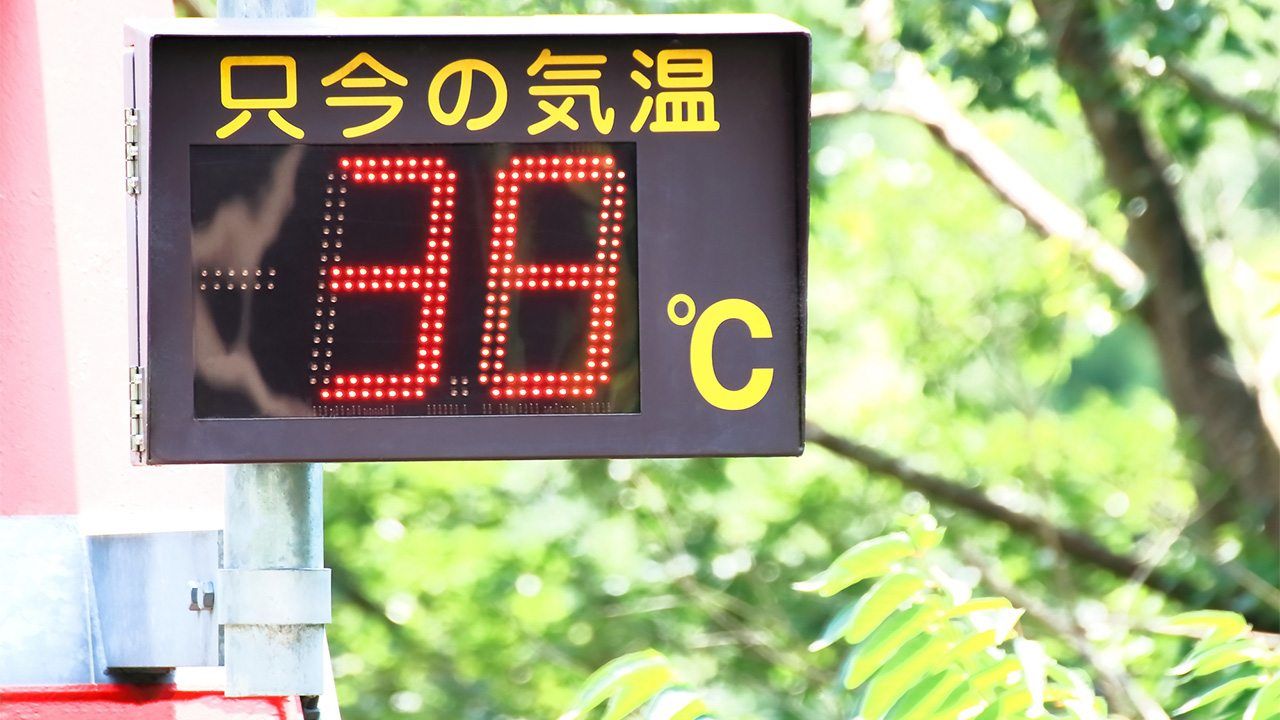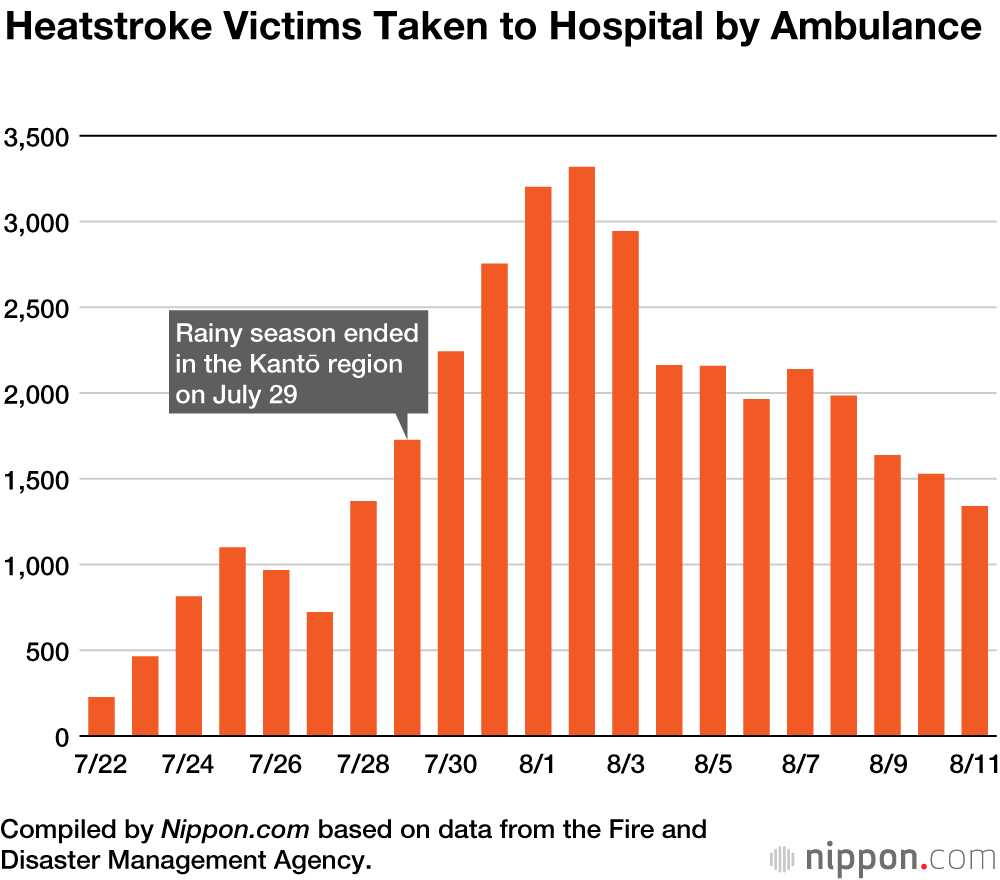
August Temperature Rise Brings Spike in Heatstroke Cases in Japan
Society Lifestyle- English
- 日本語
- 简体字
- 繁體字
- Français
- Español
- العربية
- Русский
Preliminary figures from the Fire and Disaster Management Agency showed that 12,751 people suffering from heatstroke were taken to hospital by ambulance during the one-week period from August 5 to 11. Although this was a decrease compared to the 18,347 heatstroke victims the previous week (July 29 to August 4), it marked the second straight week of more than 10,000 cases. During the week of July 22 to 28, before the end of the rainy season, the number of heatstroke victims requiring emergency transportation was 5,664.
The elderly accounted for 54.9% of the heatstroke victims from August 5 to 11, and more than 40% suffered heatstroke in their homes, which underscores the need to take precautions even when inside. That same week, 23 people died of heat stroke, and there were 57 fatalities the previous week.
Normally when a person’s body becomes hot, the heat can escape through perspiration and a rise in skin temperature. But if body temperature increases suddenly, or humidity is high with little wind, this regulating mechanism cannot keep up and the heat is trapped within the body, resulting in heatstroke. The main symptoms are dizziness, nausea, and fatigue, and in severe cases it can lead to mental disturbance or seizures.
Due to the long rainy season, unseasonably cool weather continued into July. The Japan Weather Association judged that the 2019 rainy season in the Kantō-Kōshin’etsu region, centered on Tokyo, lasted until July 29, which is one month later than 2018. As a result, the average July temperature in Tokyo was 24.1 degrees, more than four degrees cooler than the previous year. But in August, the average temperature shot up to 29.8, and more than 3,000 heatstroke victims were taken to hospital by ambulance on both August 1 and 2.
The Ministry of the Environment’s website on heatstroke prevention advises people with symptoms to move to a cool place, loosen their clothing, replenish fluids and salt, and take adequate rest. In cases where somebody is not responsive when spoken to, an ambulance should be called.
(Translated from Japanese. Banner photo © Pixta.)
